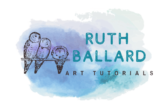Pastel Pencils and Panpastel supplies
Pencils
Stabilo Carbothello pencils are the favorite of many pastel pencil artists. Even though they only come in a box of 60, they contain all the colors you need. The pencils are vibrant and creamy to apply. They don’t break easily and can be sharpened with colored pencil sharpeners.
Gioconda Koh-i-Noor These are a wonderful addition to the Carbothellos. They’re similar except they have more vibrant, punchier colors. The full set of pastel pencils is 48.
Pastel paper
I only use Pastelmat these days. I prefer it to sanded papers. It has a unique surface that once you get used to, will love. It makes working with pastels ultimately forgiving because light colors will show up on top of dark colors. It has an amazing ability to be able to grab pigment and hold it. There’s very little dust so working with it is not at all messy. The pads below come in assorted sizes and contain 12 sheets.
18 x 24 inch pad
24 x 30 inch pad
30 x 40 inch pad
Keep the glassine sheets between papers for shielding your hands while you work.
PanPastels
These are cake-like pans of pastel pigment in screw top jars. They’re applied like paint but with foam applicators. Highly pigmented, they come in a wide variety of colors and last a long time. I absolutely love them and use them for underlayers and backgrounds. While they’re expensive to buy initially, they have much more coverage than pastel sticks and pastel pencils, so are less expensive in the long run.
Full set of 80 with sponges, applicators and blenders
Set of 20 in pure colors
Set of 7 in skin tones
Sofft tools
This set of applicators with foam tips is nice to apply the panpastels with. The triangular shape is my favorite for getting into corners. Between colors, just wipe excess pigment off on a paper towel or cloth. I use two tips when I’m working, one for lighter colors and one for darker colors.
sharpener
Sharpening soft pastel pencils can be challenging because they are so soft and can crumble. After much research, I found that I love the Afmat Artist Manual Sharpener. Watch my YouTube video where I review and demo several pencil types including the pastel pencils I recommend above.
Masking tape
I’ve tried lots of brands. The last thing you want, after spending hours working on artwork, is ripped paper. The only masking tape that I’ve found that is a decent tack but doesn’t rip is Scotch Tape 2380. I don’t risk using anything else. When removing, go slowly and instead of going down or across, pull away from your artwork.
White tranfer paper and stylus
If you love working with darker toned papers, transferring a reference can be challenging. For perfect results, copy line art with white transfer paper. It’s similar to carbon or graphite paper, just white. It transfers easily with a clear line and the sheets can be used multiple times.
Using a stylus instead of a pencil creates consistent lines that are easy to see and follow. The ball tips prevent the transfer paper from ripping or tearing as you transfer, and come in different sizes. I like the finer tips.
extras
Sofft tool sponges for blending backgrounds. These ones are shaped in different sizes and blend really well. I used them for my pastel work too.
Glassine paper for protecting hands. You can substitute wax paper or use a sheet of computer paper.
Small applicators for blending little areas. These ones made by Sofft are soft and dense.
A Drawing board is really nice to own. I take it from my easel to my art table, This one’s made of masonite.
Turpenoid Odorless Mineral Spirits work in the same way as you would use for colored pencil work – to create a painterly look and remove graininess.
Disclaimer: This page contains affiliate links. If you buy something using these links, I receive a small compensation, at no extra cost to you.
















